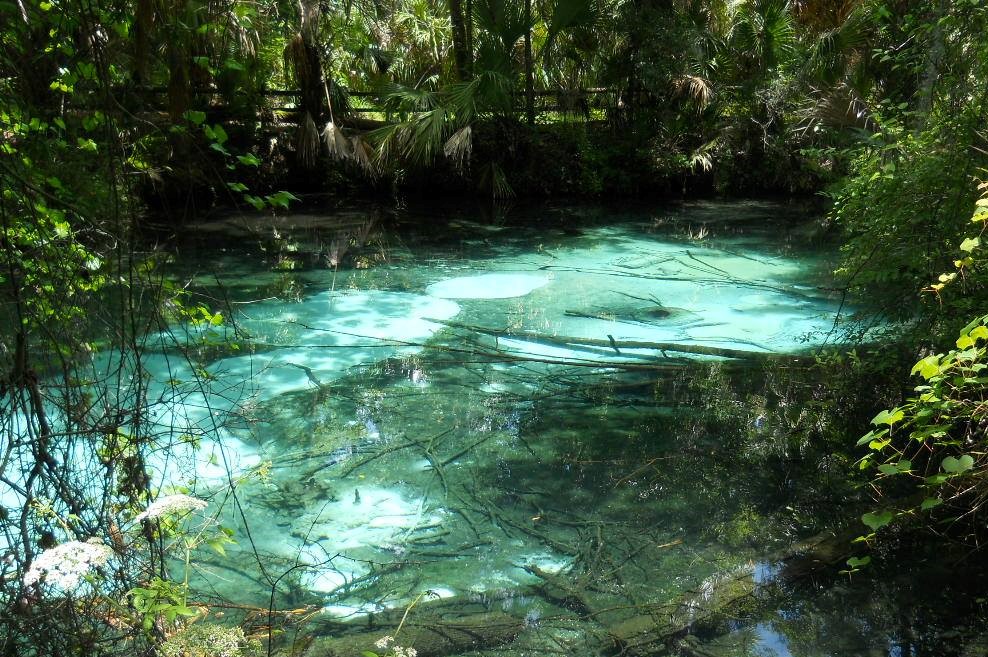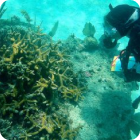Process & Pricing
The cost of your new license plates is a new plate fee of $72.40, which includes your annual registration fee ($25.00 of this fee will go directly to the Foundation). You do not need to be a resident of Indian River County to submit your order.
order form
BENEFITS
Funded
$1,901,479 in conservation efforts.
Aided
over 100 springs in the sunshine state.
Generates
one of the largest sources of funding for springs protection in the state.
Under F.S. 668.6076, email addresses are public records. If you do not want your email address released in response to a public- records request, do not send electronic mail to this entity. Instead, contact us by phone or in writing.

Remember when you wore your heart not only on your sleeve, but on your rear bumper? And trunk? And rear window? Those days may be over, but...
Your car can still help save the planet.
Just purchase one of the Fish & Wildlife Foundation of Florida’s conservation license plates or at your local tax collector’s office. For every plate sold, $25 is donated for conservation.
Each of our plates has a slightly different focus. Choose the one that best meets your passions. It’s not a small thing – we receive more than $1 million each year from these donations, funds that we and our partners use to conserve Florida black bears, wading birds, and many other species. We also use these monies to protect and manage new wildlife lands and waters and provide kids with formative outdoor experiences.
So, the next time you renew or order a plate at your local tax collector’s office, make it one of ours — even if you no longer drive a Beetle.
OVERVIEW

The non-profit Fish & Wildlife Foundation of Florida, Inc. is dedicated to the conservation, management, and sustainable enjoyment of Florida’s outstanding lands, waters, and wildlife. Since 1994, the Foundation has raised and given away more than $71 million for conservation and outdoor recreation and education programs for adults, children, and families.
FOCUS OF GRANTS
The Foundation is seeking freshwater springs-focused projects in two areas; several needs within each area are noted.
- Research projects that lead to a better understanding of Florida’s springs and how to restore and maintain their long-term ecological health, including the development of effective strategies for addressing one or more principal threats facing Florida’s springs. Preference is given to research and adaptive management projects with the potential to benefit multiple springs. (Examples: projects that identify the sources of stress for a particular spring; an innovative method of reducing nutrient pollution or controlling invasive species in one or more springs; research to ensure the continued survival of imperiled or declining spring species.)
Current priorities:
- Development of local and regional watershed maps for springs to foster better land-use planning and guide springs and aquifer-related environmental policy.
- Development and testing of strategies to improve the water quality of springs, with an emphasis on reducing nutrient loads in springs.
- Funding for communities and organizations working to preserve or restore springs.
- Restoration projects that benefit key species (e.g., eelgrass restoration to improve habitat for manatees and other springs species) and/or contribute to our understanding of springs ecosystems and their conservation.
- Community education and other outreach activities that foster adoption of best practices in the restoration, management, and conservation of freshwater springs or alter public attitudes and practices detrimental to spring conservation. Examples: community education projects that encourage landowners to reduce non-point nutrient flow into springs via vegetative buffers, improved septic systems or sewage treatment, fostering and organizing community or interest-group (e.g., divers) springs clean ups, bank stabilization, exotic species removal, and similar on-the-ground stewardship work.
Current priorities:
- Quantification of the long-term economic benefits of springs preservation and restoration; e. g., nature tourism, ecosystem services (health of aquifer/clean drinking water, water for wildlife, and agriculture, etc.).
- Proposals that address the disconnect between an individual’s actions and the large-scale impacts on springs and the aquifer (for example, that dumping chemicals on the ground can show up in surrounding waters within weeks with little filtration and consequent impacts on human and wildlife health).
- Creation of a best-practices manual of restoration and conservation strategies that have worked well at one or more springs.
- Effective strategies based on current understanding of social behavior to change behaviors by Florida residents and tourists that degrade Florida’s springs.
The potential conservation impact of each proposal and its possible applicability to multiple springs will have strong bearing on the possibility of being funded. Questions to be answered in the springs grant application include:
- Does the project have broad applicability? Could agencies and other communities take the results and apply them elsewhere?
- Does the project have the potential to change minds and behaviors?
- Are the anticipated results measurable or quantifiable? What is the grantee’s plan for publicizing the findings and having them influence work elsewhere?
- Does the project or its anticipated results have the potential to attract new funding, partners, or on-the-ground conservation agreements?

ELIGIBLE APPLICANTS AND PROJECTS
Eligible applicants include federal, state, or local government agencies; public and private colleges and universities; and 501(c)(3) non-profit organizations, including all-volunteer organizations (e.g., “Friends of…” groups). The Foundation may also, at its sole discretion, consider proposals that benefit the public from private, for-profit organizations.




HISTORY
The Florida Legislature established the Protect Florida Springs specialty license plate in 2007 to fund competitive grants for community-based springs research and conservation not currently available for state funding, as well as funding of community outreach programs aimed at implementing such research findings. The competitive grants are administered and approved by the board of directors of the Fish & Wildlife Foundation of Florida, with input from a Springs Advisory Committee made up of springs experts and community members. A list of past grants can be found below for guidance.
GRANT SIZE
Grant requests up to $50,000 will be considered. The applicant’s ability to procure matching funds from other sources may have bearing on the possibility of being funded but is not a prerequisite. Multi-year projects will be considered, but funding is generally awarded for 12-month intervals. The next Request for Proposals is March 8th – April 12th, 2024. Apply here.
FOR MORE INFORMATION
Contact Ms. Anita Forester.
Grant applicants can log in here to access application status and assigned follow-up forms.
PAST GRANTS
| Project Name | Grant Amount |
|---|---|
| Enhance and Monitor Habitat Restoration Efforts in Silver Glen Springs to Increase Foraging Resources | $22,440 |
| Springs Celebration and Longleaf Pine Restoration Project | $5,000 |
| Lower Santa Fe River Basin Groundwater Nitrate Assessment | $8,140 |
| Ecological Model for Effective Restoration of Submerged Aquatic Vegetation: A Mesocosm-Based Approach | $12,100 |
| Lower Santa Fe River Springs Herbicide and Pesticide Study | $20,000 |
| Filling the Data Gaps: Purchasing New SpringsWatch Equipment | $6,120 |
| Acquisition of Spectrofluorometer to Support Florida Springs Dye Tracing and Other Research | $25,009 |
| 2024 Florida Springs Summit | $10,000 |
| Is Your Water Well? Private well test awareness and nitrate monitoring in the Springs Heartland | $23,716 |
| Evaluation of bull shark movement and habitat use in Crystal River/Kings Bay | $10,000 |
| Monitoring Manatee Use and Developing a Manatee Observer Program in Salt and Silver Glen Springs | $19,927 |
| Is Your Water Well? Private Well Test Awareness and Nitrate Monitoring in the Suwannee Valley | $20,000 |
| Swaying New Home Buyers Mindsets Towards Sustainable Landscapes | $11,000 |
| “Freedom Lawns” Social Marketing Behavior Change Campaign | $15,000 |
| Altering Public Attitudes and Practices that Harm Florida Springs | $8,400 |
| Springs Project Funding Analysis | $4,000 |
| Connecting Florida’s Sportsmen and Women with a Healthy Springs Ecosystem | $5,000 |
| Florida Springsheds Cleanups | $13,400 |
| Ecological Health Assessment of the Silver Springs System | $31,000 |
| SpringsWatch Training Workshop | $15,121 |
| Fertilizer and Aquifer Actions Behavior Change Campaign | $20,000 |
| Educating the Public About Conservation and a Major Restoration of the Blue Spring State Park Headspring and Run | $5,500 |
| Evaluating and Analyzing Microplastics in Florida Springs | $35,000 |
| Evaluation of Common Snook Movement Patterns Associated with Thermal Refugia in Crystal River | $34,099 |
| Determining Changes in Utilization of Ocklawaha River System by Manatees in Response to Environmental Declination in Other Manatee Use Areas | $23,439 |
| Florida Springs Field School 2022 | $14,000 |
| Monitoring Manatee and Recreational Use of the Silver River | $16,388 |
| Kings Bay SPRINGSWATCH | $10,200 |
| Ecological Health and Recreation Assessment of the Rainbow Springs System | $40,000 |
| Florida Springs Friendly Yards | $7,000 |
| Springs Protection and Manatee-Monitoring through Citizen Science and Educational Outreach in the Springs Heartland | $8,300 |
| Simple Things for Our Springs Phase III | $20,794 |
| Identifying sources of changing water chemistry in the Upper Floridan Aquifer | $22,143 |
| Santa Fe Springshed Troglobitic Surveys | $14,000 |
| All Accessible Glass Bottom Boat for Silver Springs State Park | $20,000 |
| Simple Things For Our Springs Phase II | $10,000 |
| Springs Protection Behavior Change Videos | $12,000 |
| Ecological Health Assessment at Seven Outstanding Florida Springs on the Suwannee River | $40,000 |
| W. Panhandle SPRINGSWATCH TAG Grant Propoal FSI_2021_22 | $10,200 |
| Creating a Better Santa Fe BMAP | $4,940 |
| The Story of Florida Water: A permanent exhibition at the state's natural history museum | $20,000 |
| Interactive Florida Springs Atlas Tag Grant Proposal FSI_2021_22 | $10,000 |
| Healthy Underwater Forest signage at Ruth B. Kirby Gilchrist Blue Springs State Park | $3,500 |
| Florida Springs Summit 2021 | $9,000 |
| Jackson Blue Springswatch Tag Grant Proposal FSI_2021_22 | $10,200 |
| Santa Fe River Springs Submerged Aquatic Vegetation (SAV) Project | $14,000 |
| Year II: Evaluation of Thermal Refuge Habitat for Fish in Springs of the Lower Suwannee River | $35,880 |
| Determining Habitat Preference, Seasonal Use Trends and the Resighting Frequency of Manatees in the Silver River | $16,351 |
| Assessing Manatee Use of Regional Springs and Habitat Selection Utilizing GPS Telemetry in the Ocklawaha River System | $23,619 |
| Simple Things for Our Springs | $22,000 |
| Nitrate Concentrations in Groundwater of the Santa Fe River Basin and Outreach | $9,400 |
| FloridaÂ’s Magic Waters | $40,000 |
| Determining Annual Use Trends, Return Rates, and Habitat Preferences of Manatees in the Silver River | $17,098 |
| Irrigation-free residential landscapes in FloridaÂ’s springs region: Making the Case | $49,900 |
| Herbivory and Recreational Exclusion Device Study | $8,400 |
| Aquifer Awareness Education Campaign | $10,000 |
| Modeling Nutrient Transport in Karst Aquifer for Florida Springs Water Quality Management | $59,441 |
| Springs Field School | $10,555 |
| Florida Springs Conservation Prioritization Tool and Web Application | $29,740 |
| Blue Spring Alliance Community Plan for Springshed Resilience | $10,000 |
| Surveying for Endemic Cave Crayfish Species at Alexander and Silver Glen Springs | $4,300 |
| Evaluation of Thermal Refuge Habitat for Snook in Springs of the Lower Suwannee River | $37,078 |
| Sediment history of Florida springs: determining baseline spring state and subsequent human impacts | $17,667 |
| Monitoring the Silver River for Manatees While Increasing Public Awareness on Best Practices for Viewing | $15,952 |
| Movement Patterns of the Florida Peninsula Cooter and the Florida Red-Bellied Turtle in Wekiwa Springs | $9,052 |
| Assessing temporal and spatial trends in fish assemblages within spring runs of the St. Johns River Basin | $42,500 |
| Wakulla SPRINGSWATCH | $10,695 |
| Wekiva River SPRINGSWATCH | $10,695 |
| Investigating Drivers of Winter Shifts in Fish Abundance in the Homosassa River System | $75,000 |
| Poe Springs Aquatic Habitat Enhancement & Outreach | $12,500 |
| Do the sediments of St. Johns River springs contain higher organic content than springs on other river systems? | $18,377 |
| Santa Fe River Springs Submerged Aquatic Vegetation (SAV) Project | $12,000 |
| Florida Springs Conservation Plan and Executive Summary | $16,500 |
| Monitoring the Silver River and Characterizing Springs in the Upper Ocklawaha River for Manatee Utilization | $15,015 |
| Hornsby Springs Dissolved Oxygen and Faunal Study | $14,000 |
| Why is flow in Silver Springs declining? | $49,369 |
| Lower Santa Fe River SPRINGSWATCH | $10,000 |
| Weeki Wachee SPRINGSWATCH | $10,000 |
| Wakulla Spring Dark Waters: Pinpointing Sources | $33,912 |
| Protect Weeki Wachee Spring / Lyngbya Removal | $40,000 |
| Inspiring Behavior Change through Experiencing the Santa Fe River and Springs | $5,700 |
| Fish Identification Guide for Florida Springs | $7,500 |
| Florida Springs Restoration Summit | $12,000 |
| Santa Fe River and Springs Signage Project | $11,230 |
| Out of sight but not out of mind: Developing a septic systems education toolbox for homeowners in Florida’s springsheds | $28,509 |
| Blue Water Audit Interactive Website | $15,000 |
| Rainbow Springs SPRINGSWATCH | $10,215 |
| Volusia Blue Spring Restoration Action Plan and Executive Summary | $16,500 |
| Wakulla Springs Water Quality Restoration | $15,000 |
| Hernando County Fertilizer Ordinance Survey and Results Outreach | $14,511 |
| Springs Protection Outreach Campaign | $9,000 |
| Characterizing and Monitoring Environmental Parameters as Springs in the Lower Oklawaha River | $20,000 |
| The Water Festival: Celebrating Water Through Art | $17,000 |
| Wakulla Spring Dark Waters: Causes and Sources Phase II | $32,900 |
| Following the Water to Wakulla Spring Video | $6,900 |
| Lake and Sinkhole Seepage Nitrogen Loading to Wakulla Springs | $4,500 |
| Monitoring Environmental Parameters and Use by a Keystone Species in Central Florida’s Salt and Silver Glen Springs | $12,924 |
| Ichetucknee Springs Baseline Assessment - A Citizen-Science Project | $15,000 |
| Wakulla Spring Dark Water: Causes and Sources | $6,200 |
| Agriculture and Springs Protection High School Curriculum, Field Trip, and Educator Short Course. | $5,000 |
| Wekiwa Springs and River Restoration Plan | $16,000 |
| Rainbow Springs Baseline Assessment - A Citizen-Science Project | $15,000 |
| Wakulla Spring Baseline Assessment - A Citizen-Science Project | $15,000 |
| Trophic Dynamics in Blue Spring, Volusia County, Florida | $4,290 |
| Blue Spring Adventurers Program | $10,000 |
| Monitoring Re-colonization at Ulele Spring Post-Restoration | $13,528 |
| Septic to Sewer Conversion Study | $45,000 |










